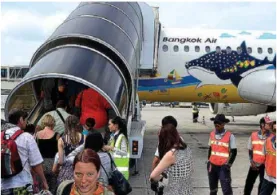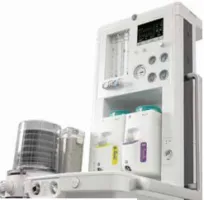Feature
Finding the right mix of public and private funding
Whether it’s public or private, or a mix of both, citizens still look to those at the helm of leadership to provide the best for their medical needs.
Finding the right mix of public and private funding
Whether it’s public or private, or a mix of both, citizens still look to those at the helm of leadership to provide the best for their medical needs.
A different take on health care innovation
How CapsuleTech is reinventing our idea of medical solutions
The rise of biologics in meeting clinical needs
The Asian pharmaceuticals industry is currently evolving under the influence of four innovation trends, according to Richard M. Johnson, President & CEO, Parenteral Drug Association (PDA), a leading non-profit organization advising the pharmaceutical industry. “On the product side, one is the growing importance of biological therapeutics. These products require more complex andhighly controlled manufacturing processes, and more advanced facilities and Quality Control methodologies. The second trend is for more self-administration (for example: pre-filled syringes and autoinjectors) versus administration by health care workers,” says Johnson.
Thailand ahead in med tourism
Thailand may not match as Singapore as athe destination of choice for complex treatments, but it is certainly welcoming many international patients each year, making it one of ASEAN’s leaders in medical tourism. Over 2.5m patients crossed the borders to Thailand in 2012 alone, and the momentum is expected to increase when the ASEAN Economic Community becomes effective in 2015. CIMB analyst Gary Ng predicts the sector will generate approximately THB803bn (US$25bn) in revenues from medical tourism between 2012-2016.
What you need to know about Asia’s healthcare expenditure
Healthcare systems all over Asia are undergoing significant change. Just as the state of economic development across the region varies, the development of healthcare systems in different Asian countries differs from one another. Among the more developed economies, health systems face rising demand for specialised services. In Japan and Singapore for example, governments and healthcare players are striving to meet the needs of their aging populations. At the same time, there are cost pressures and market restructuring even as competition intensifies. Among emerging economies such as Indonesia and the Philippines, young and mushrooming urban populations are stretching the capacity of their countries’ healthcare facilities. One way by which we can further examine the variance across Asian health systems is by observing their differing expenditure on healthcare.
Raffles Medical looks to cash in on China’s healthcare boom
Raffles Medical Group is looking to bounce by breaking into China this year. The Singapore-based health care provider, which operates dozens of medical clinics and laboratories as well as the Raffles Hospital, encountered a slight growth hiccup but it hopes to re-ignite its growth engine through an aggressive China expansion strategy. RFMD announced its collaboration with Shanghai Lujiazui to build a 300-bed hospital in Pudong, the bustling financial district in Shanghai, teeming with wealthy expats and a local population of more than 5 million. Raffles Medical has also agreed to work with China Merchant Group for a similar 200-bed hospital venture in Shenzhen, one of the country’s most successful Special Economic Zones situated just north of Hong Kong. Management is even considering building hospitals in the capital Beijing.
Innovation in rural Indonesia
With nearly half of the population living in peripheral regions, performing routine and emergency surgeries in rural Indonesia is becoming a tremendous challenge. Low levels of clinical care and a lack of suitable tools and equipment are not helping either.
Who’s winning the $10.8bn Asian mHealth race?
While Asian governments and users recognize the efficiency of eHealth programmes, eHealth is still in the early stages of adoption.
Future directions of healthcare policy in South East Asia
South East Asia is a very broadly used term and for the purposes of this article, we are focusing on the Association of South East Asian Nations (ASEAN), which comprises of Malaysia, Singapore, Thailand, Indonesia, Philippines, Vietnam, Cambodia, Laos, Myanmar and Brunei. The social, cultural, religious, economic, political and infrastructural fabrics of these nations vary significantly, making this region both extremely diverse and disparate. Setting this context allows us to understand and appreciate the variability in access, affordability and quality of healthcare across this region.
How will Singapore cope with its aging population?
Issues for providing healthcare arise as one in five Singapore residents are predicted to be 65 years old or over by 2030. Healthcare is an important sector in most developed countries, and Singapore has one of the widest varieties of services available at various levels of affordability. The Ministry of Health believes in ensuring quality and affordable basic medical services for all, in conjunction with the promotion of healthy living and preventive health programmes, as well as maintaining high standards of living, clean water and hygiene,to achieve better health for all. Currently Singapore’s healthcare system is designed to ensure that everyone has access to different levels of healthcare in a timely, cost-effective and seamless manner, but there is a general acknowledgement that the capacity of healthcare needs to expand, particularly within the healthcare sector.
Singapore Medical Group’s new CEO eyes injecting aesthetics into business model
Wellness and health screening are also among his biggest priorities.
Patient centricity and teamwork in an organisation
Find out how Singapore’s National Healthcare Group Polyclinics ensures good clinical outcomes for its patients.
Check out what’s new at Asia’s largest hospitals
From MRI- safe incubators to integrated Chinese and Western medicine clinics, Asian healthcare providers continue to innovate.
Are PPPs in Asian healthcare helping or harming patients?
Experts weigh in on government and corporate partnerships, and striking the balance between efficiency and equity in patient care.
4 major trends to watch in Asian pharmaceuticals
The Asian pharmaceuticals industry is currently evolving under the influence of four innovation trends, according to Richard M. Johnson, President & CEO, Parenteral Drug Association (PDA), a leading non-profit organization advising the pharmaceutical industry.
Asia hit by medical resources shortage
The changing demographics and evolving trends across Asia-Pacific mean that traditional operating models have become obsolete for healthcare providers. Focusing on cost efficient delivery of healthcare through shared responsibility across the value chain is called for, now more than ever.
Thailand wins med tourism race
Thailand may not match as Singapore as athe destination of choice for complex treatments, but it is certainly welcoming many international patients each year, making it one of ASEAN’s leaders in medical tourism. Over 2.5m patients crossed the borders to Thailand in 2012 alone, and the momentum is expected to increase when the ASEAN Economic Community becomes effective in 2015.


















 Advertise
Advertise














